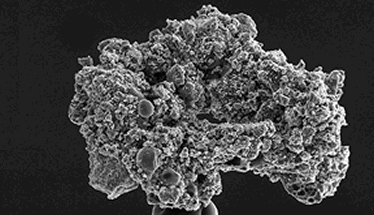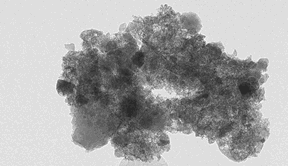 |
 |
|
SEM and XuM rotational movies of a ring agglutinate Agglutinate particles comprise of a number of rock, mineral and glass fragments encased in impact-melt glass. Often agglutinates have ‘ring’ or ‘doughnut’ structure, as in this example. Lindsay and Srnka, 1975, explained that when a micrometeor strikes the lunar surface enough heat is generated to fuse together and even melt the underlying soil particles. Some of the melt is lost as spray during the initial crater formation. The rest of the impact melt flows into the spaces between the surrounding soil particles encasing them in a glassy matrix as it cools. They concluded that only one ring agglutinate can be formed from a single micrometeor strike. They also estimated that the mass of an agglutinate is approximately five times that of the impacting meteorite. In the SEM rotational movie, notice the myriad of tiny fragments stuck to the surface. The some of the pores in the glassy matrix are open to the surface. The porosity of the glassy matrix is clearly visible in the XuM movie, as are the myriad of tiny mineral fragments. The darker block fragments were identified as ilmenite using XEDS spot analysis. In the past, the size, shape and spatial distribution of individual fragments contained within agglutinates has been gleaned from analysis of backscattered electron images of polished thin sections which only provide information from a 2D slice. In the XuM movie such information can be gleaned from the entire particle. |

